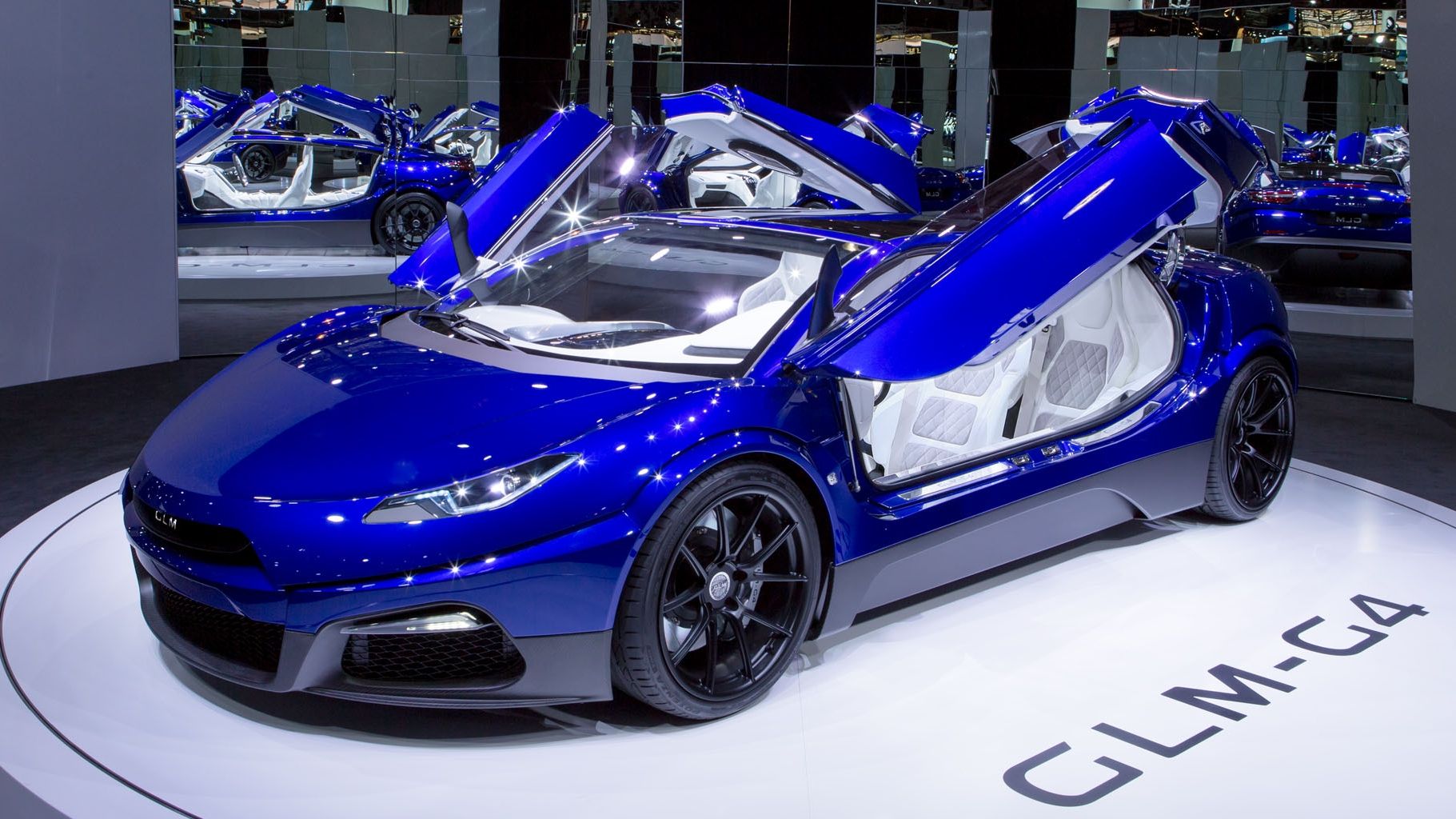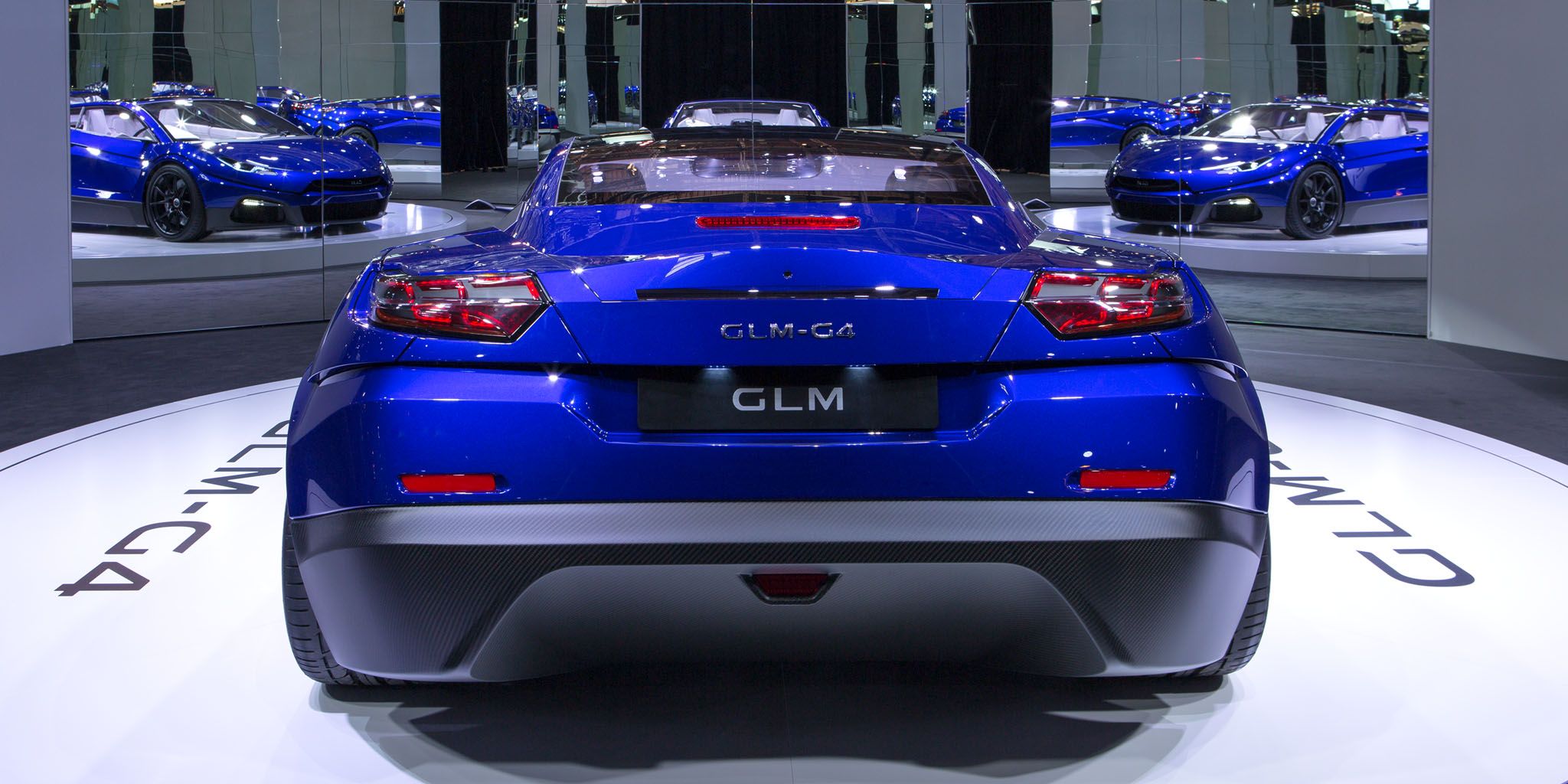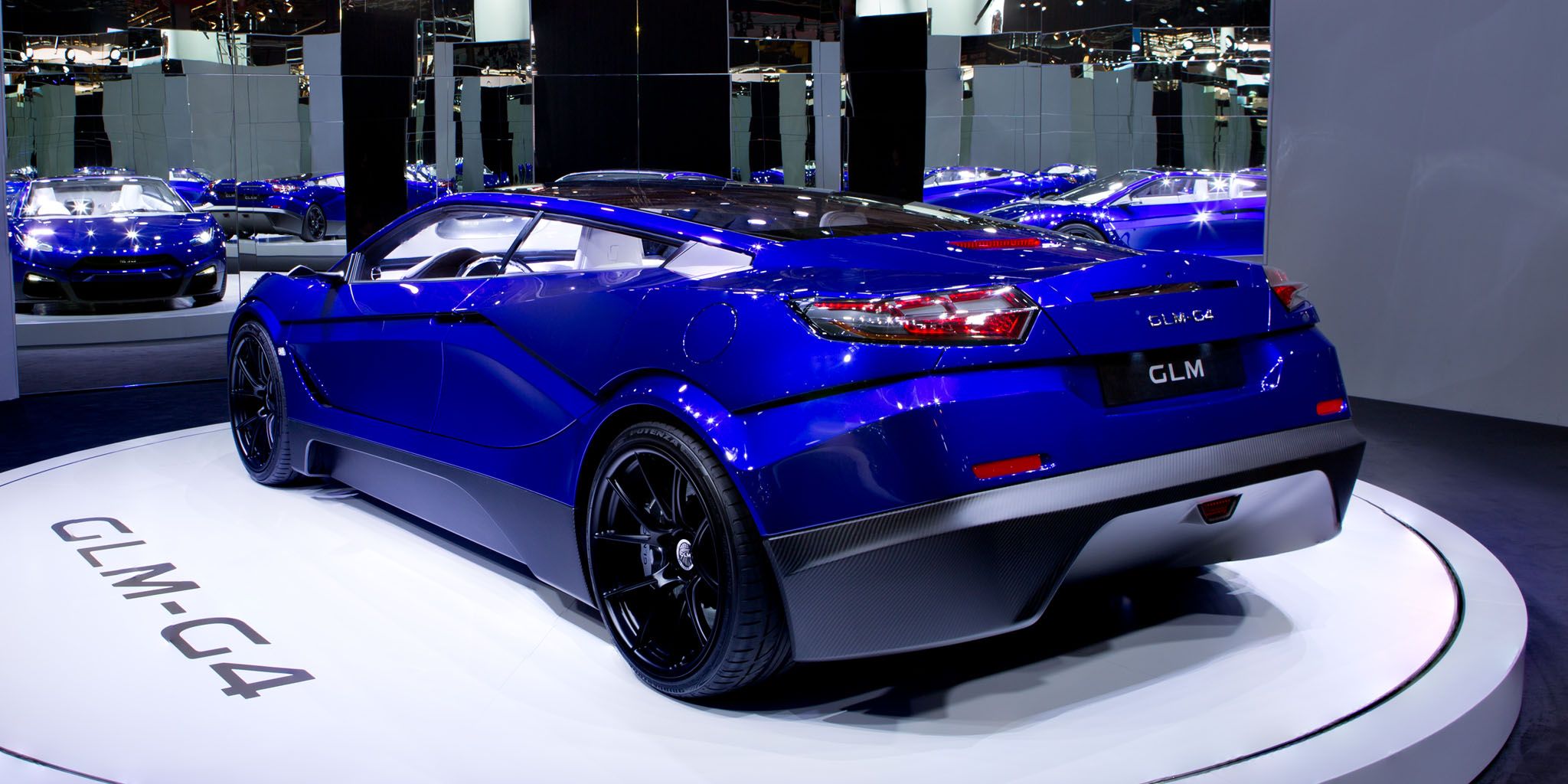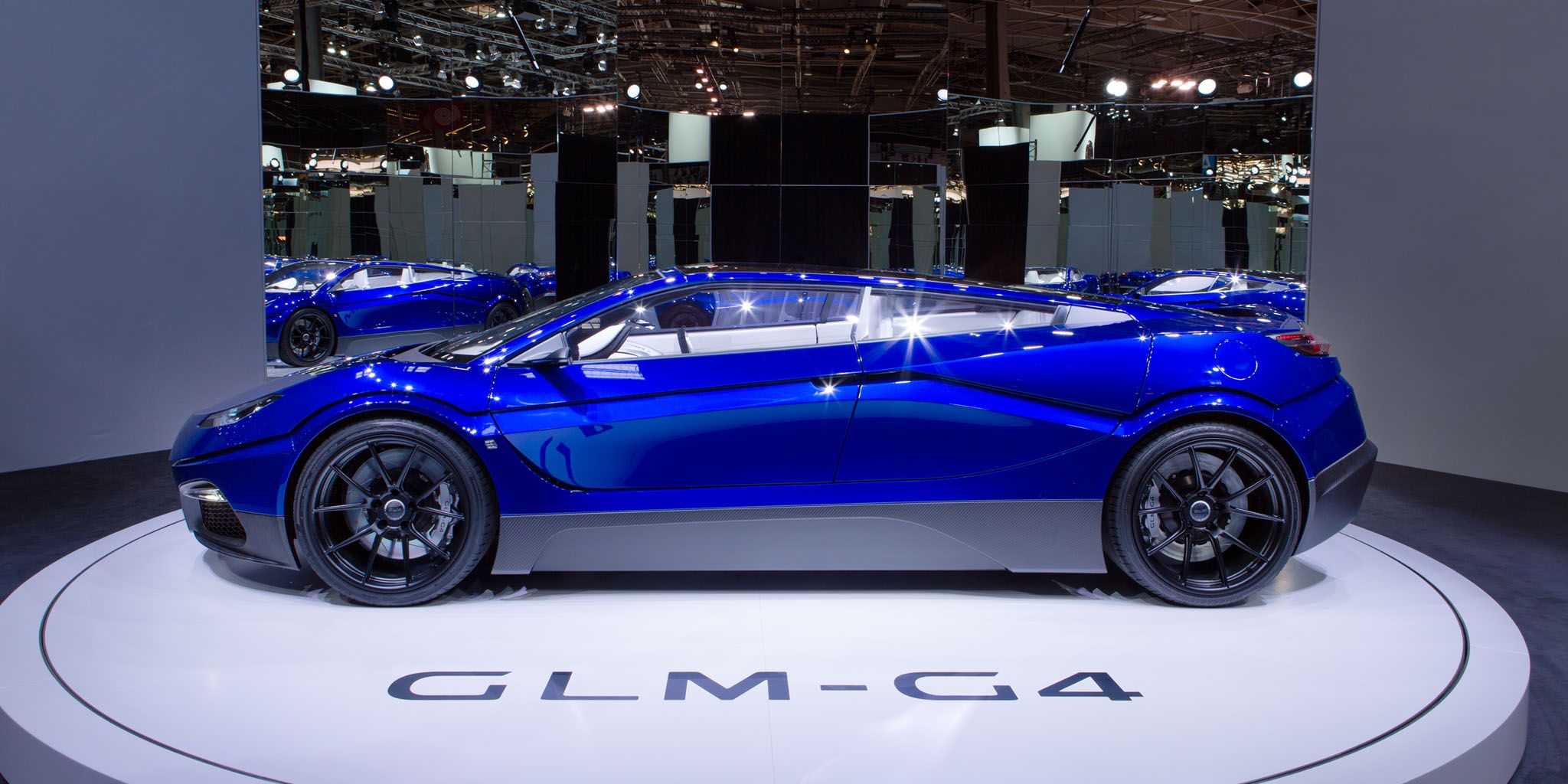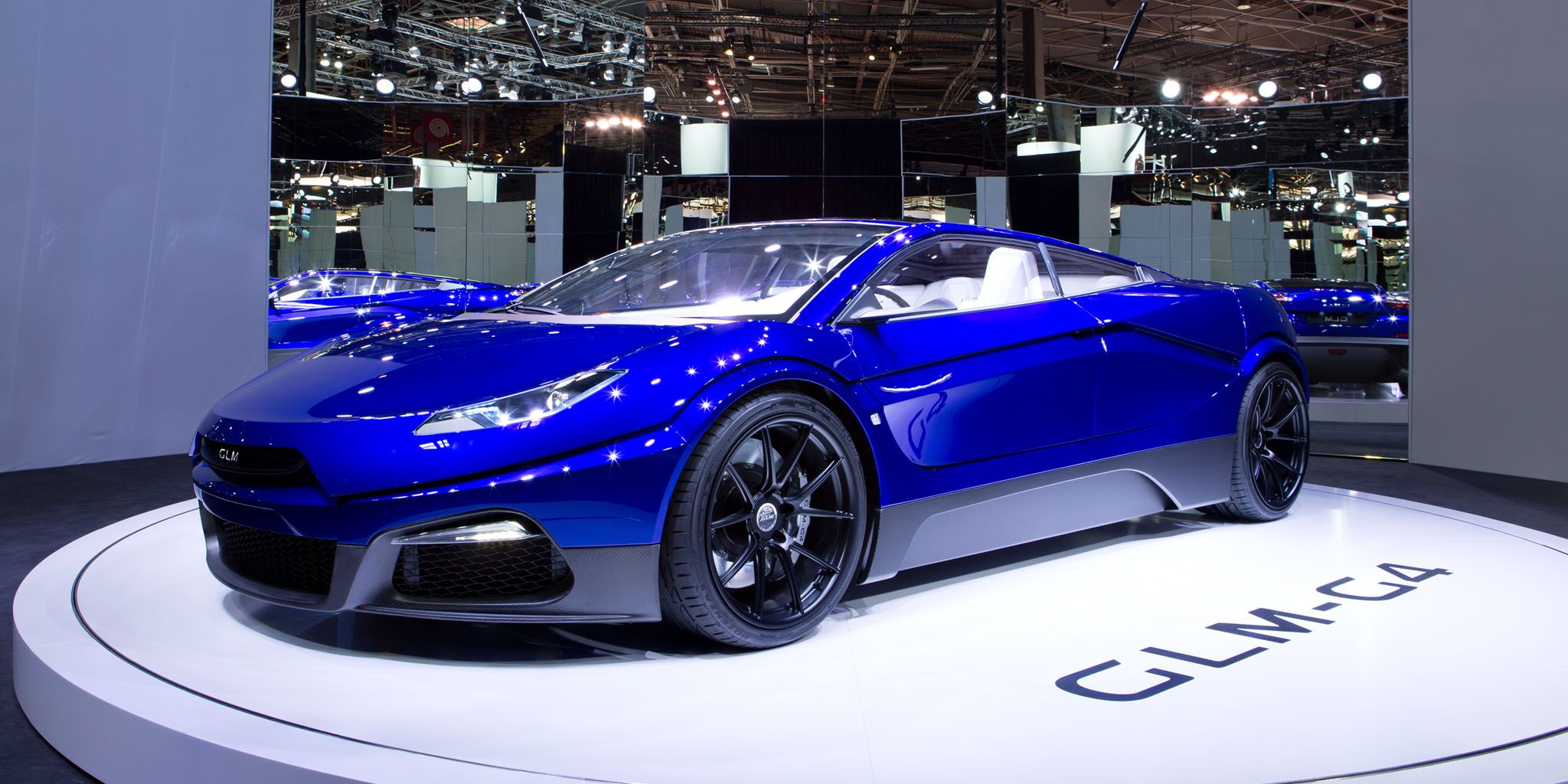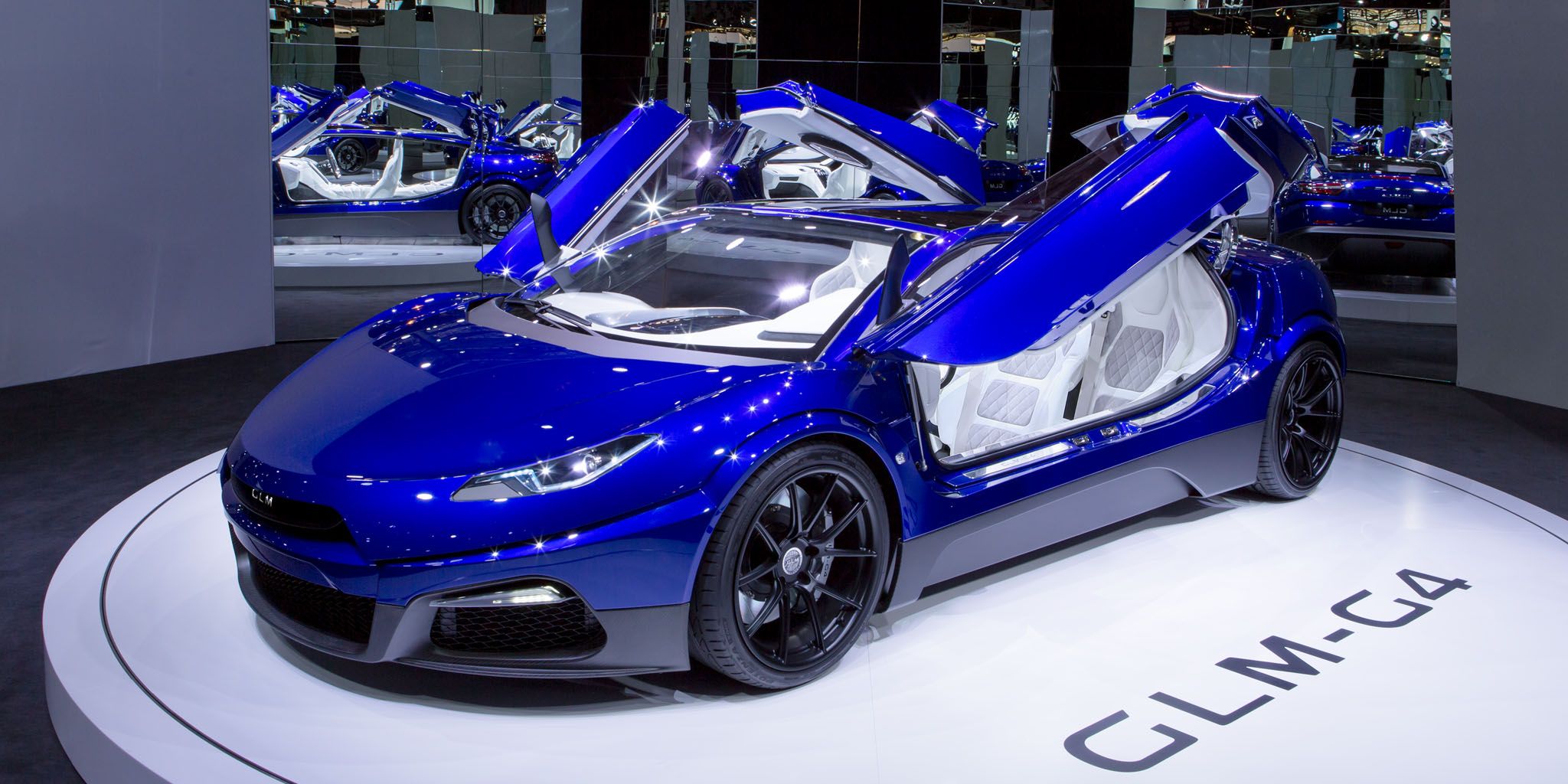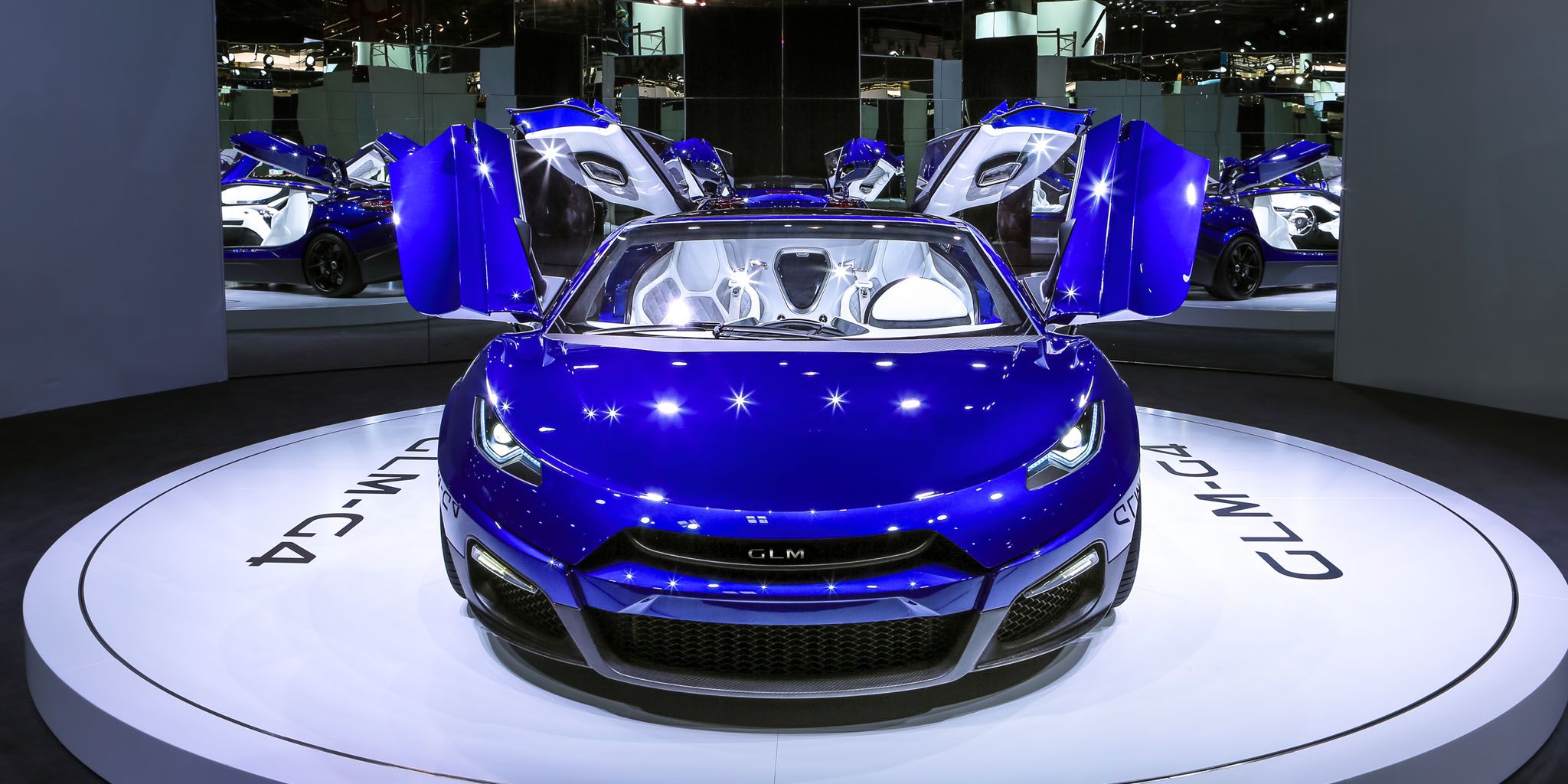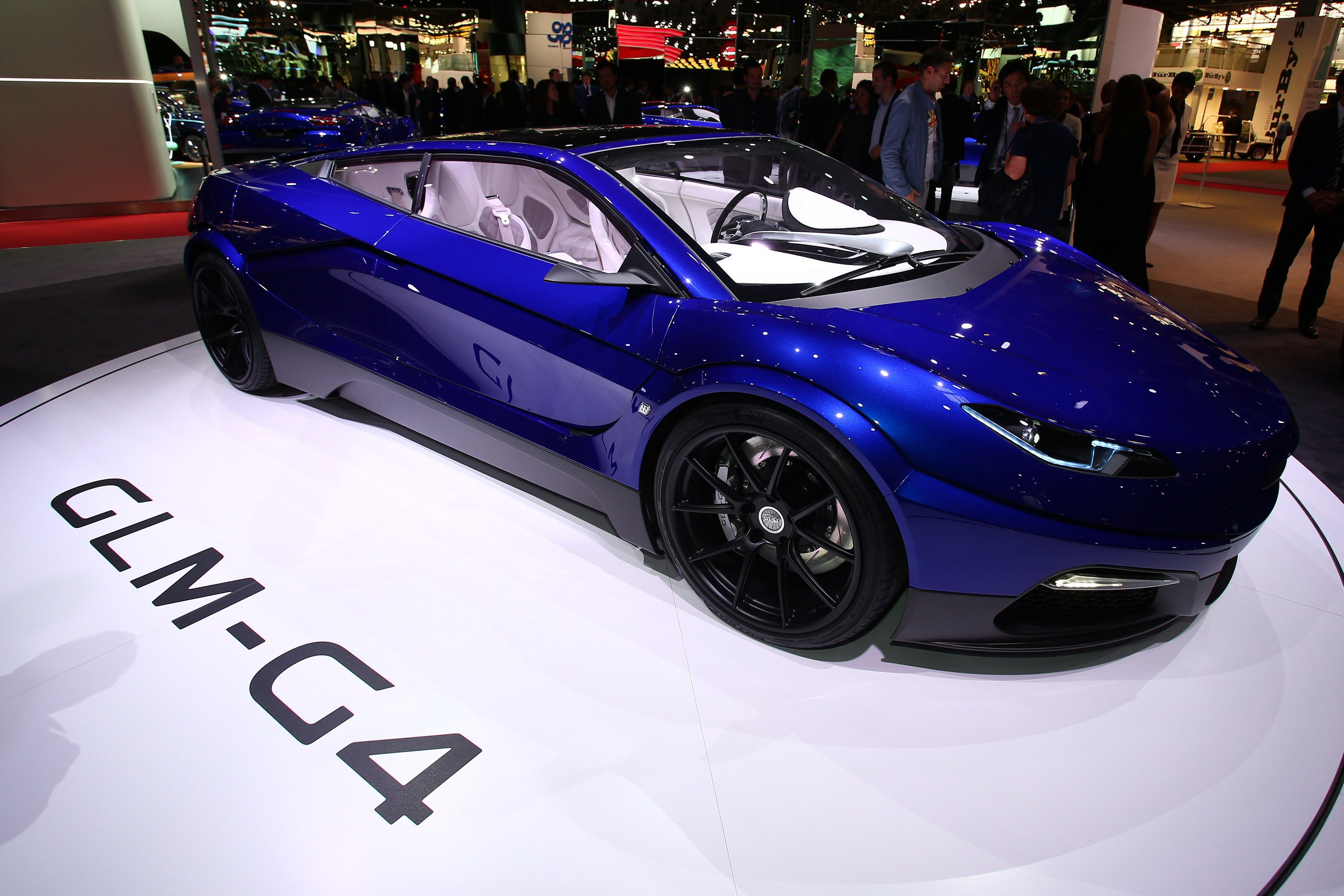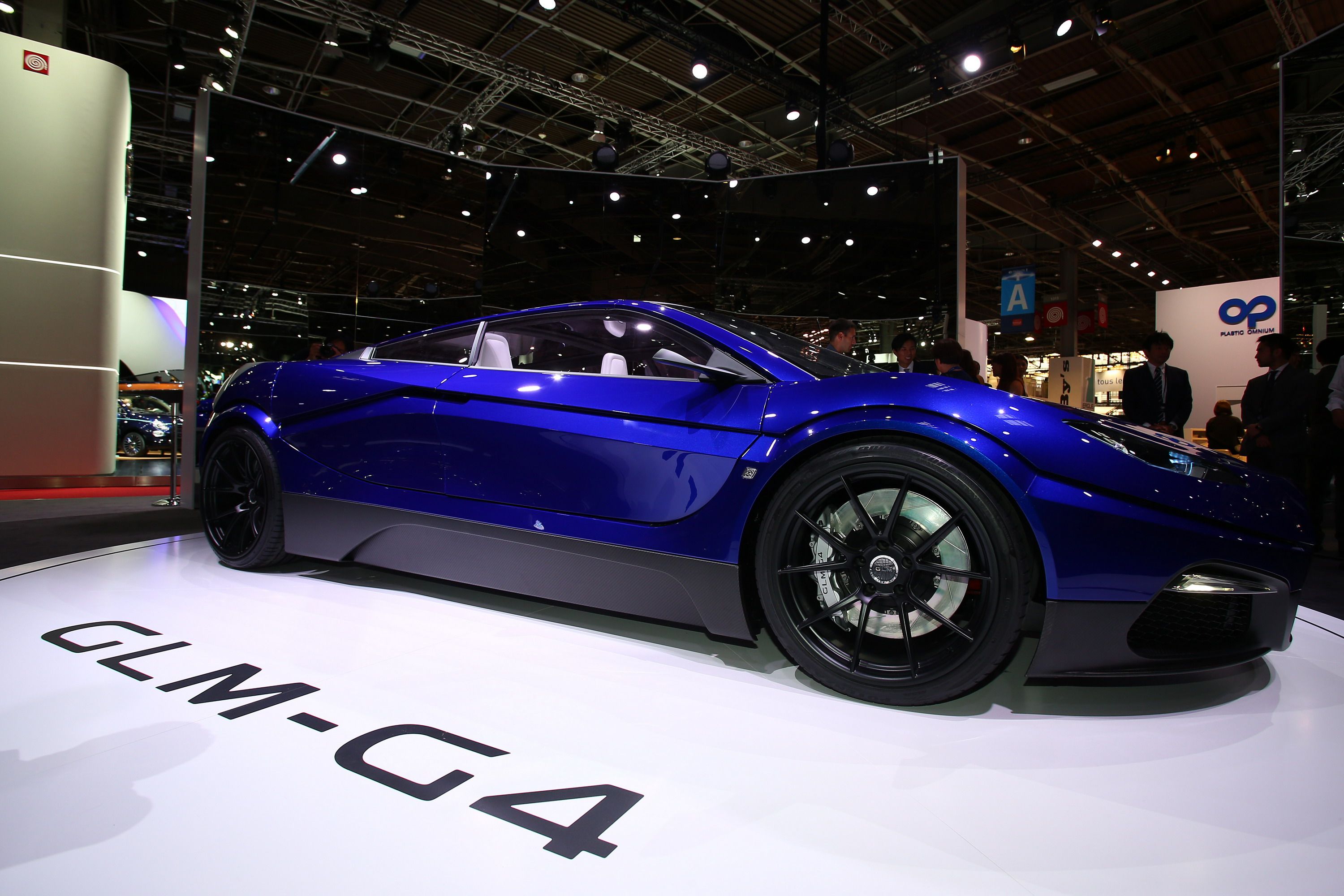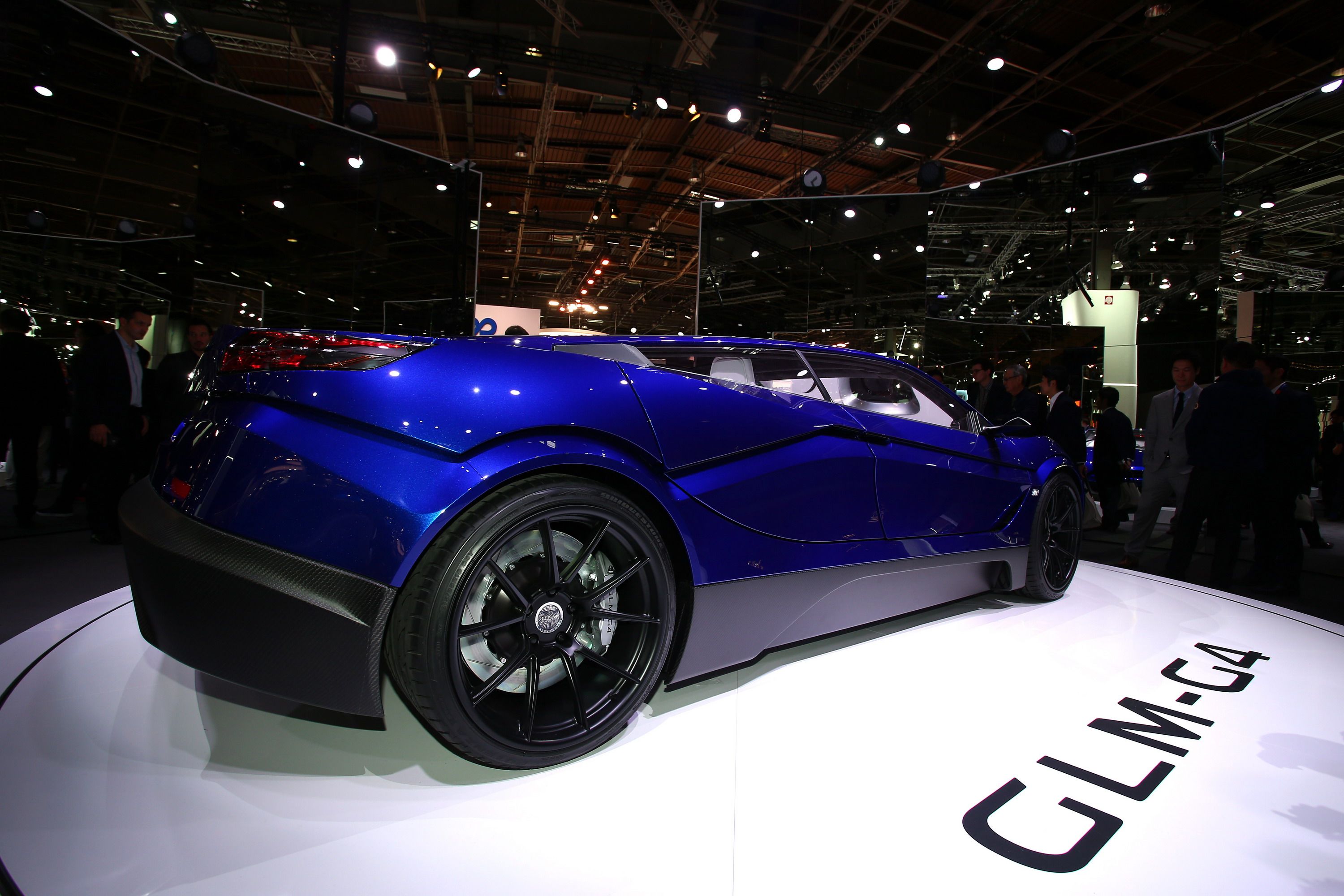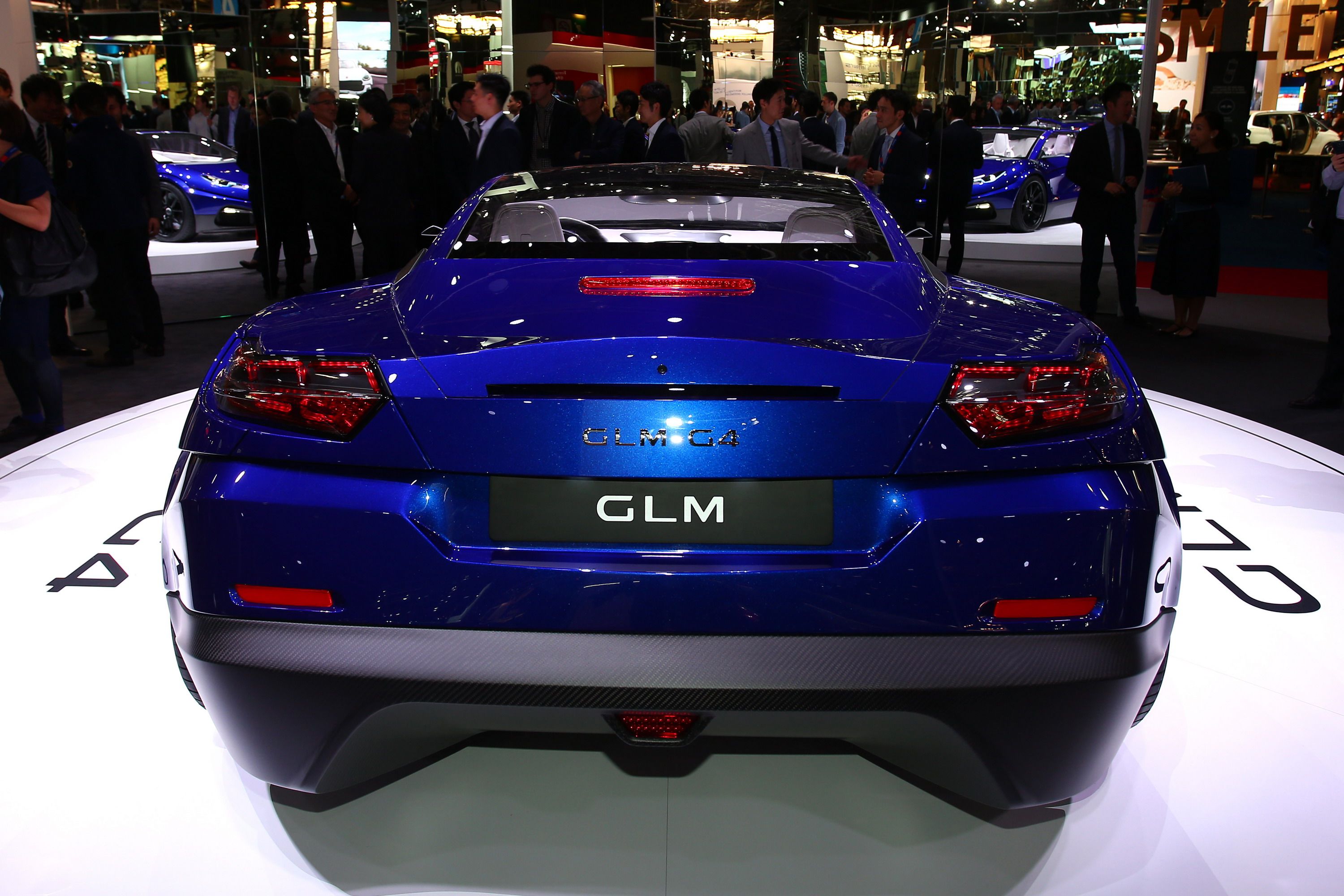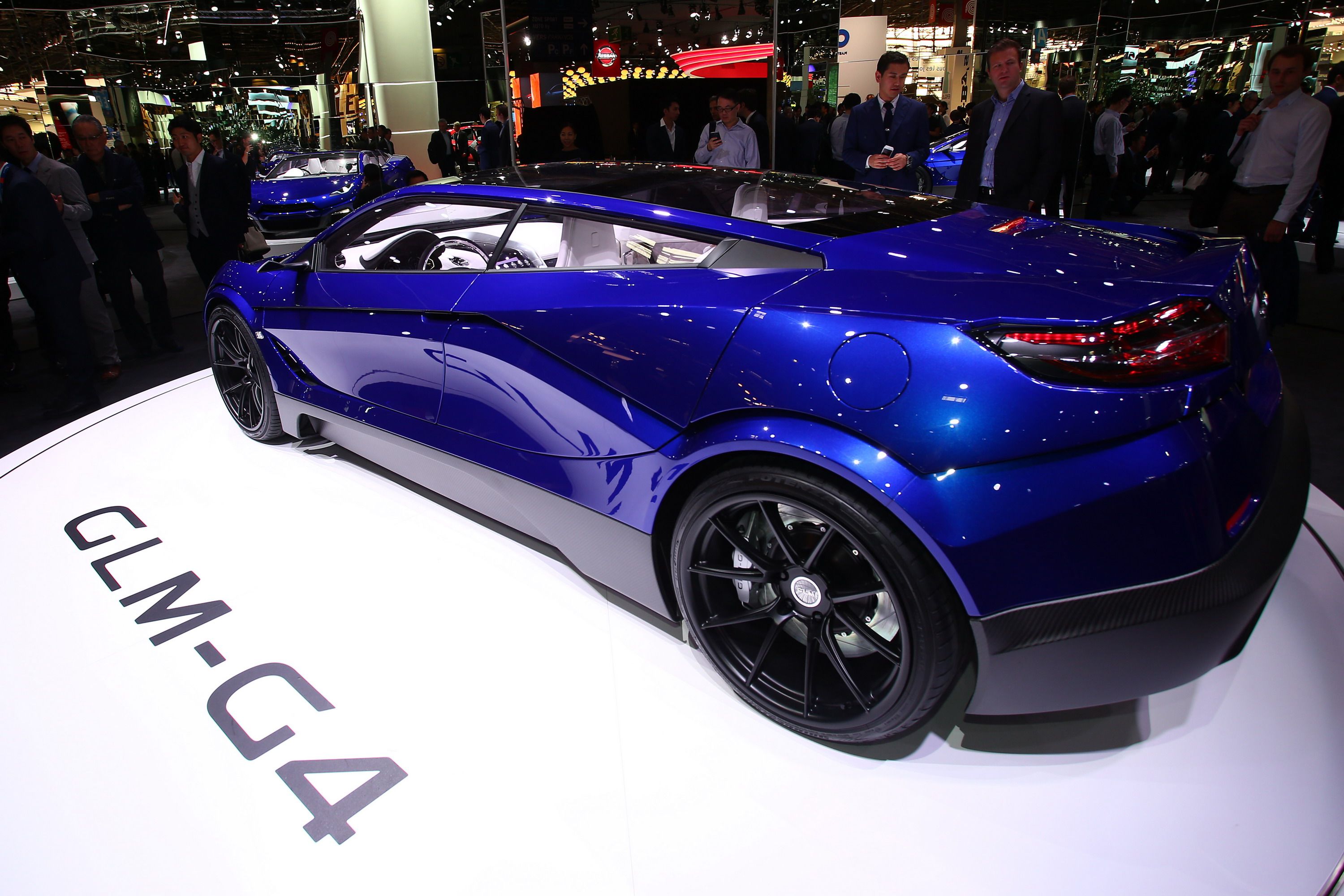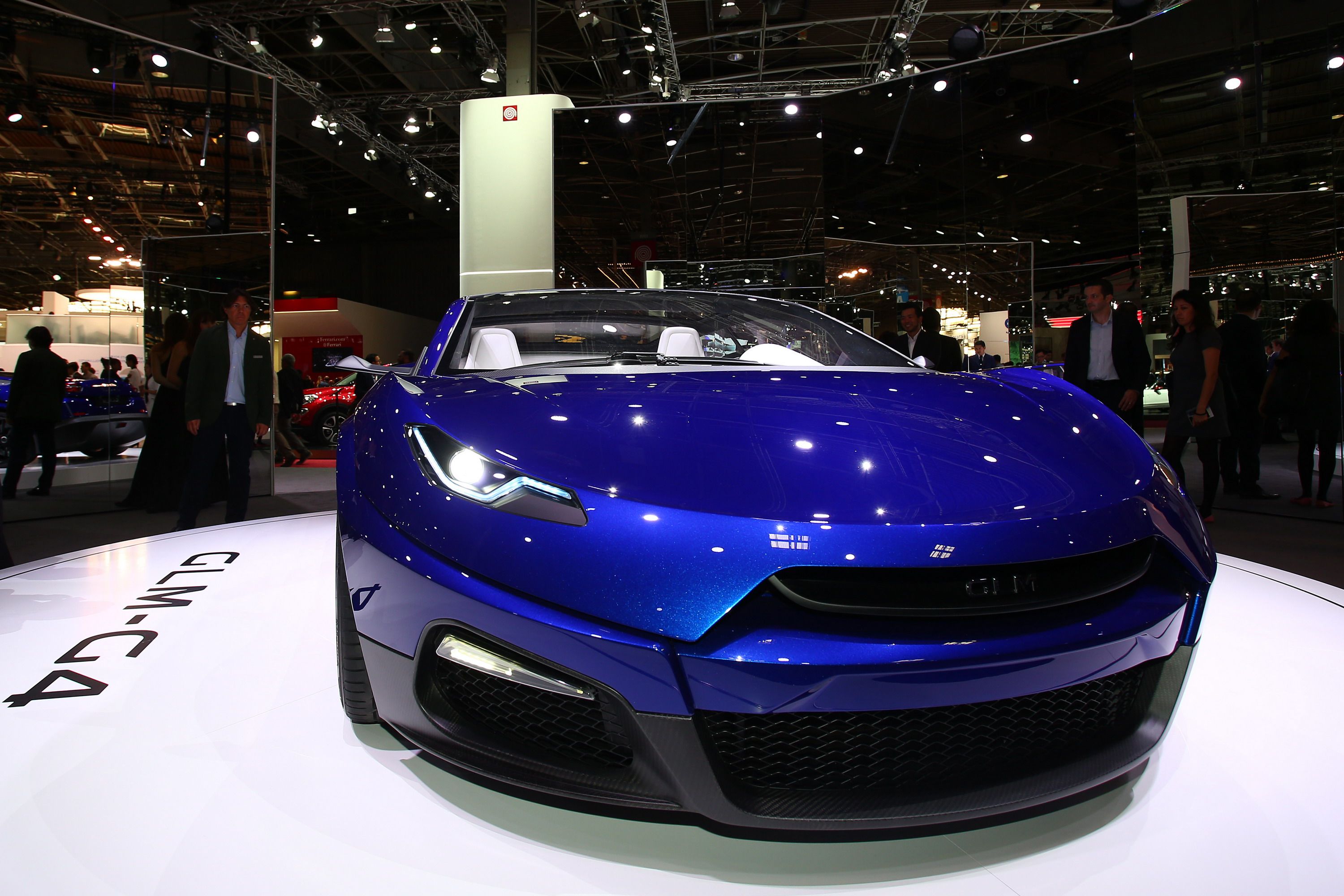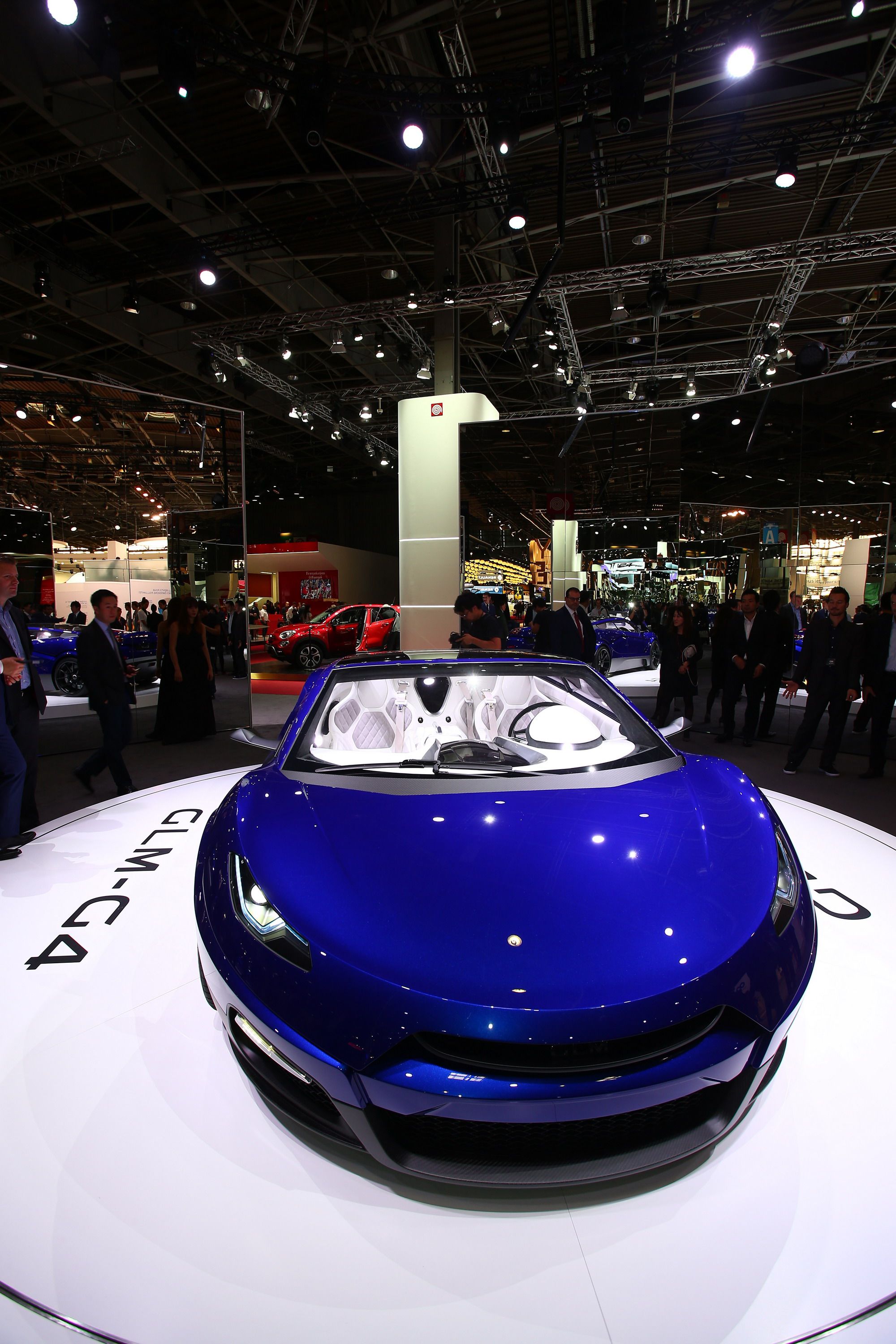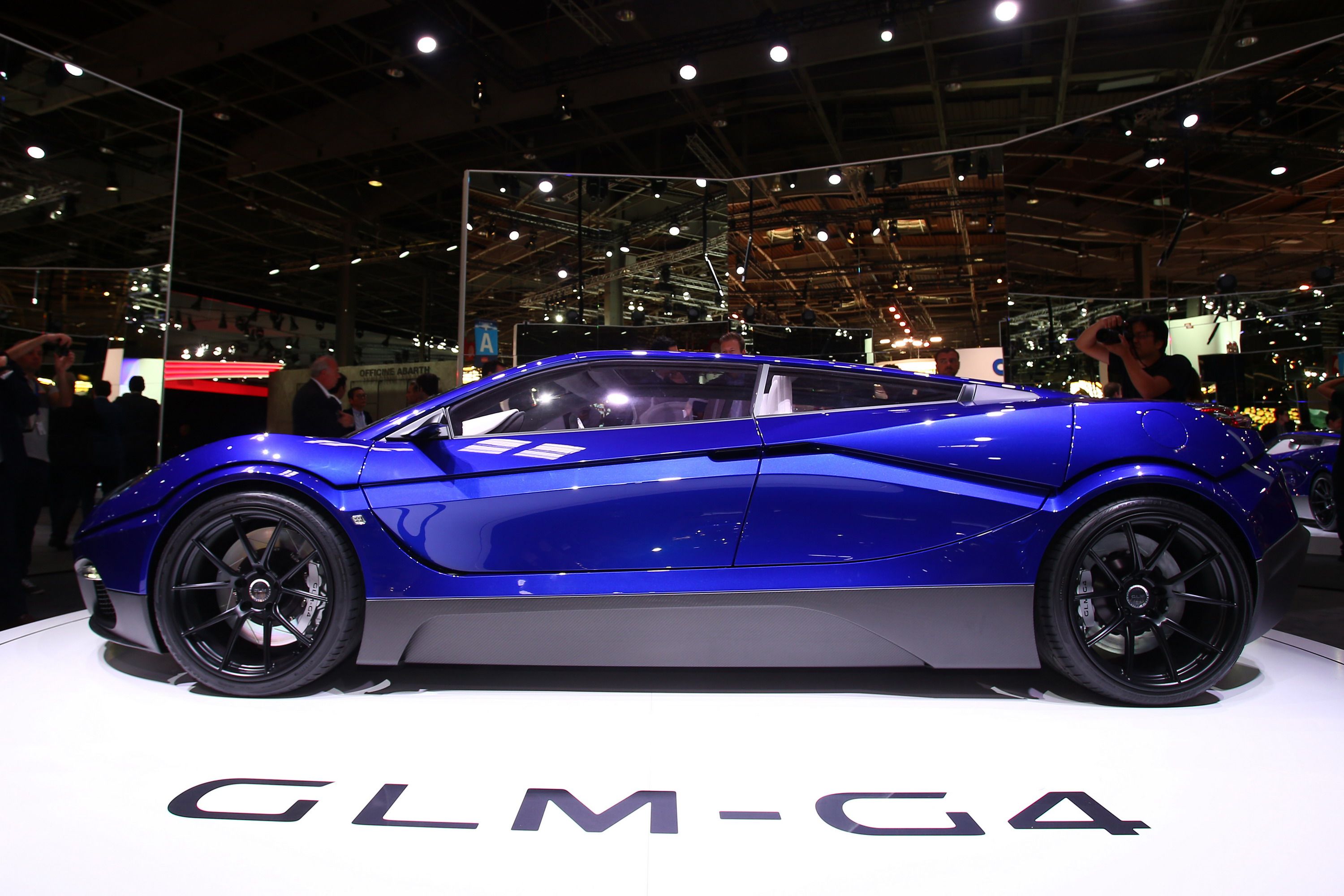The shockingly blue slab of speed you see before you is the latest concept from Green Lord Motors (GLM), a new all-electric start-up from the Land of the Rising Sun that will attempt to break into the top-shelf BEV segment with ultimate velocity and style. Recently unveiled at the 2016 Paris Motor Show, GLM introduces the G4 by describing it as “just like a powerful lightning of innovation coming from Japan.” Sounds good. Outside, you’ll find styling from a Dutch design studio, while underneath is enough full-throttle grunt to hit 60 mph in less than four seconds. Inside is a crystalline layout that looks like it was plucked from an alien spaceship.
Who is GLM? Based out of Kyoto, GLM was founded in 2010 with the goal of creating the ultimate all-electric sports car. Just four months after it’s founding, GLM inherited Tommykaira, a Japanese tuning company known for modifying some of the island nation’s most popular performance rides. Then in 2014, GLM released the Tommykaira ZZ EV, a lithe little all-electric open-top two-door that ran up the hill at the 2015 Goodwood Festival of Speed.
Now, GLM appears to be gearing up for something bigger and a whole lot badder. The G4 looks to be a true battery-powered exotic, but the question is this – is it all just vaporware?
Continue reading to learn more about the GLM G4.
2017 GLM G4
- Make: Array
- Model: 2017 GLM G4
- Horsepower: 532
- Torque: 737
- [do not use] Vehicle Model: Array
Exterior
The impressive exterior design you see here is more or less a direct carryover from the Roadyacht GTS, a limited edition, 200-mph supercar from the brains over at Savage Rivale. Savage is based in the Netherlands and released the Roadyacht GTS back in 2011 as “the only four-door topless on demand supercar in the world.
Rather than shedding its roof, the G4 replaces the top with a solid piece of glass that runs the length of the car (did someone say Tesla?). It also offers a unique twist on the Roadyacht GTS’s dramatic scissor door set-up, opening up and out, rather than up and away from the body.
In front, we find a sleek, aggressive fascia, with lines that remind me of a cross between the Nissan GT-R, the new Acura NSX, and a Tesla Model S. The stance is low-slung and wide, with headlights that are sharp and drawn-back to help guide the eye rearwards. Below the nose is a grille mesh insert (no blanked out beak here!) and some raw carbon fiber.
This two-tone aesthetic continues into the flanks, where we find more carbon for the side skirts. Complementing the black off-set sections are enormous split-spoke wheels, which come wrapped with ultra-low profile tires. The roofline is vaguely reminiscent of an older Koenigsegg, while a bold character line runs at shoulder-height before dipping into the rear doors towards the fenders.
The squared-off rear end comes without a wing, which seems like the right choice for a sleek EV. Rather, high-speed stability appears to come courtesy of underbody aero, as implied by the sizable carbon-fiber rear skirt.
Personally, I really like the way this thing looks. It’s a nice mix between streamlined sleekness and eye-catching character, radiating a futuristic ambiance that’s simply dripping with performance. Simply put, it’s definitely the right attitude for an all-electric supercar.
That gorgeous blue paint and bare carbon fiber don’t hurt, either.
Interior
Complementing the impressive exterior is an equally impressive cabin space. Offering a very handsome white on black color scheme, the G4 features seating for four thanks to a quartet of individual captain’s seats, with two in front, and two in the rear. Running lengthwise from front to back is a large center console, which comes outfitted with a duo of screens for both the front and rear passengers.
Drivers will grip a unique, three-spoke, flat-bottom steering wheel, which is trimmed in polished metal to give it a shimmering appearance. Behind the wheel is an all-digital display. As far as I can gather, there’s absolutely no analogue instrumentation to be found anywhere on the car.
Adding a serious amount of cool factor is ice-blue ambient lighting, which illuminates the foot wells, hard buttons, and center console, lending the whole thing a Mr. Freeze-like quality. The side sills also illuminate with the “GLM-G4” logo, while the charge point uses a digital readout to indicate how charged the battery pack is.
The upholstery is quilted with a diamond pattern in the seat back and door panels, while the material covering the center console is creased with a geometric pattern.
Once again, I like what I’m seeing. But there’s a problem – the design is pretty much a carryover from the Roadyacht that came before, albeit with a new color scheme and updated instruments.
I would have preferred to see some newer ideas, but I guess I can’t complain – it still looks quite good.
Drivetrain
Don’t fret – the G4 isn’t a total reboot of the Roadyacht. That thing came with a 6.2-liter V-8, producing 670 horsepower and 538 pound-feet of torque. That means a lot of nastiness spewing out the tailpipe in the rear. By contrast, the G4 doesn’t have a tailpipe. Rather, it uses an in-house developed all-electric powerplant to make some very extraordinary zero-emission output figures.
Let’s get straight to the heart of why you should care about the GLM G4. Motivation is derived from twin-motor set-up, with one motor driving the front axle, and another driving the rear axle, making for prodigious AWD grip. GLM didn’t divulge the full technical specs, but did clue us into some very enticing details – how does 532 horsepower and over 737 pound-feet of torque grab ya?
GLM says it’s enough to propel the G4 to 62 mph in just 3.7 seconds, which is just a tad slower than the Porsche Mission E. It’ll charge on to a top speed of 250 km/h (155 mph), with up to 400 km (248 miles) of range offered between plug ins.
Other features include multiple driving modes, as well as a multi-stage transmission, although GLM declined to elaborate on the specifics. However, the start-up did mention the use of a unique stator to help improve the various driving modes, as well as a low draw mode to keep that range as high as possible. Finally, there’s special software that calculates imperfections in the driving surface for max traction at all times.
Chassis And Handling
Underneath all that blue, you’ll find underpinnings that are traditional super car stuff. What’s that mean? Composite materials – lightweight, strong, and ready for blast off.
Of course, it’s the same chassis that you’d get with the Savage Roadyacht GTS, but rather than using a tall internal combustion and RWD layout, most of the weight is low, while all four wheels provide the motivation. Throw in instant electrified torque, and this thing should be a completely different beast in the corners.
GLM says it’s currently working on its on modular chassis, including a Grand Touring platform, a sports car platform, and a compact car platform. It would have been nice if the G4 used one of these, but I guess then we wouldn’t get a second look at the Roadyacht GTS.
Competition
Porsche Mission E
Air-cooled, naturally aspirated six-cylinders aren’t really a thing anymore, but hey, the show must go on. Enter the Porsche Mission E, Stuttgart’s very first all-electric design study. With 600 horsepower, AWD, 310 miles of range, and 3.5 seconds to 62 mph, this thing looks like a real challenge in the world of BEV performance. And considering Porsche’s considerable financial means (at least compared to GLM), I’d say this thing has a real fighting chance at making it to production
Read the full review here.
Tesla Model S
Any discussion of all-electric performance, even one revolving around a concept, requires at least a cursory mention of the Tesla Model S. Now offered in the intimidating P100D trim level, the Model S can hit 60 mph in just 2.5 seconds, making it not only the quickest production electric car on the road, but the quickest production car period. Best of all, you can go buy one right now. You know, with money.
Read the full review here.
Conclusion
“The automotive industry is changing, and in the next few years, the electric vehicles market will see a significant growth, taking shares of the internal combustion vehicles market,” says GLM’s CEO, Hiroyasu Koma. Mr. Koma continues, saying, “Seeking to develop an EV that not only concretely contributes to a low-carbon society, but provides an exciting drive experience to the driver is our vision and daily inspiration.”
I think it’s a fantastic idea. Electric vehicles are clearly on the rise, breaking free from old connotations of compromise-ridden eco boxes and moving towards a premium experience, whether its comfortable cruising on the highway, or adrenaline-soaked flat-footed passes down the quarter mile. Now is the time to start thinking about where the EV will go next, and the idea of a high-powered four-door with supermodel good looks is right in line with my hopes and dreams.
But hopes and dreams don’t always get along with the blunt realities of starting a car company, so we’ll have to wait and see if GLM can follow through. It’s not an impossible proposition, because hey – if a plucky little unknown from California can rock the boat as hard as Tesla has, then anything is possible.

